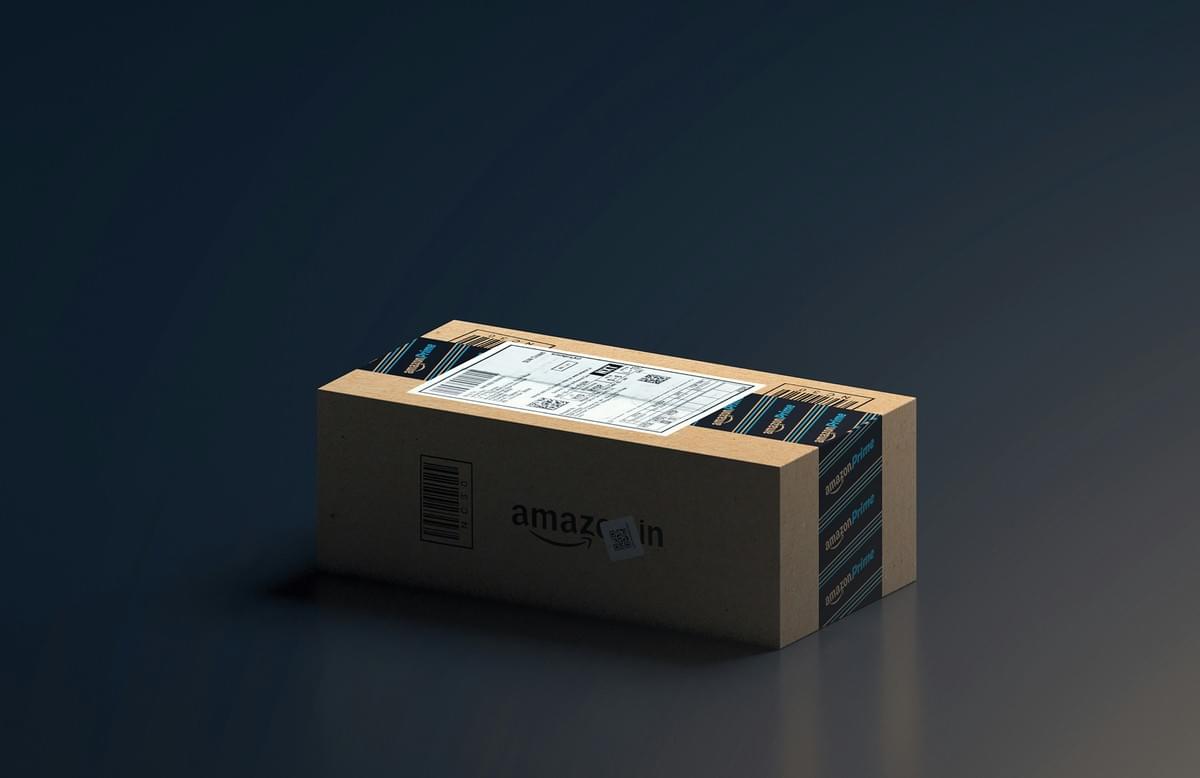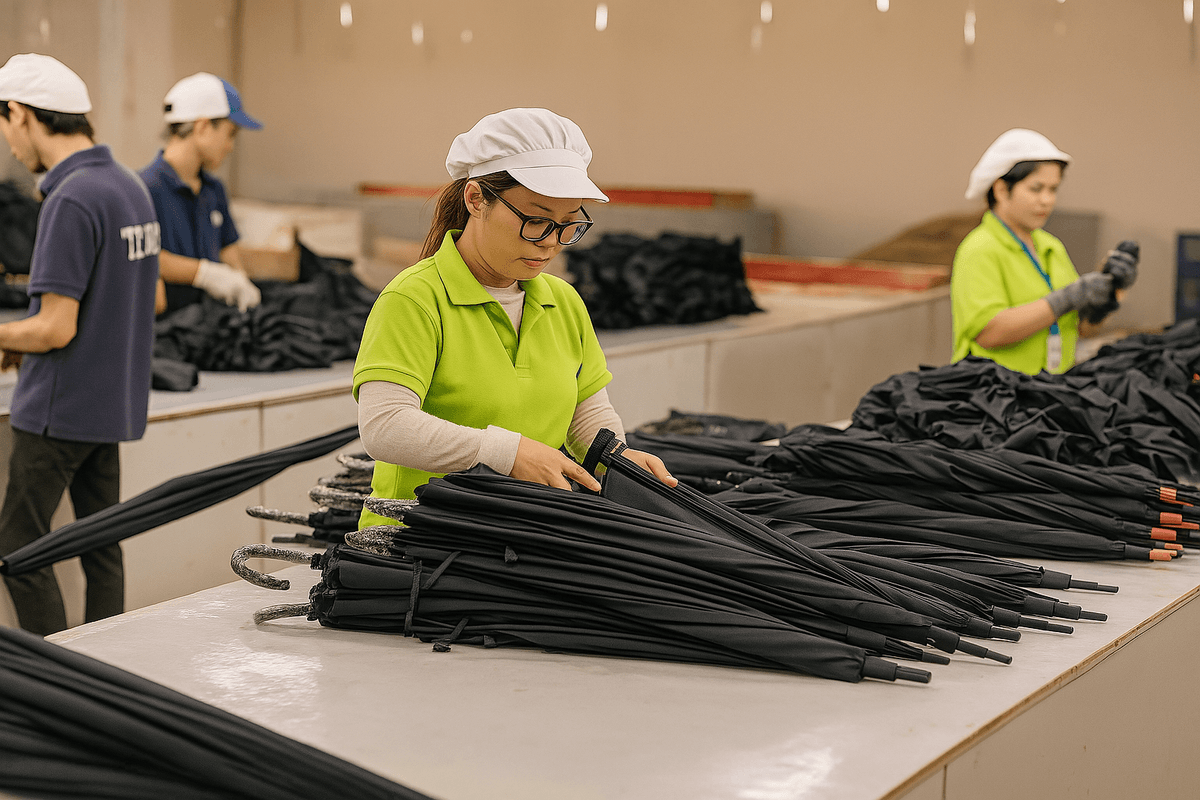Introduction

In the fast-paced world of e-commerce, particularly when Selling Non-Compliant Products on Amazon, the risks associated with non-compliance can be daunting. Non-compliance not only jeopardizes your business's reputation but can also lead to hefty fines and loss of customer trust. Navigating the labyrinth of regulations becomes crucial for sellers aiming to thrive in a competitive marketplace.
The Risks of Non-Compliance
The consequences of non-compliance are far-reaching and can have a significant impact on your bottom line. From product recalls to legal actions, the risks include financial penalties that could cripple your operations. Moreover, when customers discover that they’ve purchased non-compliant apparel, it can lead to negative reviews and a tarnished brand image that may take years to rebuild.
Why Apparel Compliance Matters
Apparel compliance is not just about meeting regulations; it’s about ensuring the safety and satisfaction of your customers. In an era where consumers are increasingly aware of their rights and product standards, demonstrating compliance can set you apart from competitors who may overlook these critical aspects. By prioritizing apparel compliance, you not only protect your business but also foster customer loyalty through transparency and accountability.
Understanding EU and US Guidelines
Understanding EU Compliance Guidelines and US Compliance Guidelines is essential for any seller looking to expand their reach internationally or domestically on platforms like Amazon. Each region has its own set of regulations that govern everything from labeling requirements to safety standards for textiles and clothing. Familiarizing yourself with these guidelines will empower you to make informed decisions that align with both market expectations and legal obligations while minimizing risks associated with Selling Non-Compliant Products on Amazon.
What Are Non-Compliant Products?

In the fast-paced world of online retail, particularly on platforms like Amazon, understanding non-compliant products is crucial for sellers. Non-compliance can lead to significant setbacks, including fines, product recalls, or even account suspension. By grasping what constitutes a non-compliant product and recognizing common issues, sellers can better navigate the complexities of apparel compliance under both EU and US compliance guidelines.
Defining Non-Compliant Products
Non-compliant products are those that fail to meet the established safety and regulatory standards set by governing bodies in various regions. For apparel, this could mean anything from failing to adhere to labeling requirements to using materials that don’t comply with safety regulations. In essence, if a product is being sold without meeting the necessary legal criteria set forth by EU compliance guidelines or US compliance guidelines, it falls into the realm of non-compliance.
Identifying Common Non-Compliance Issues
Common non-compliance issues often stem from inadequate product testing or misinterpretation of regulations. Sellers may overlook critical aspects such as chemical content in fabrics or neglect proper labeling concerning care instructions and origin information. These oversights not only jeopardize consumer safety but also pose risks for those selling non-compliant products on Amazon—potentially leading to negative reviews and diminished brand trust.
The Impact on Your Amazon Business
The repercussions of selling non-compliant products on Amazon can be dire and multifaceted. Firstly, there’s the immediate risk of account suspension or removal from marketplace listings due to violations of platform policies regarding compliance standards. Additionally, long-term impacts include damage to brand reputation and financial losses associated with recalls or legal penalties—making it imperative for sellers to prioritize apparel compliance in their business strategies while staying informed about EU compliance guidelines and US compliance guidelines alike.
Navigating EU Compliance Guidelines

When it comes to Selling Non-Compliant Products on Amazon, understanding EU Compliance Guidelines is crucial for any seller looking to thrive in the European market. The EU has stringent regulations that ensure product safety and consumer protection, particularly in the apparel sector. Failing to comply can lead not only to penalties but also to reputational damage that could jeopardize your business.
Key Aspects of EU Compliance
EU Compliance Guidelines encompass a range of requirements that sellers must adhere to when marketing apparel products. These include regulations on labeling, safety standards, and environmental considerations such as REACH (Registration, Evaluation, Authorisation and Restriction of Chemicals). Ensuring your products meet these criteria is essential for avoiding fines and maintaining customer trust.
Additionally, sellers must be aware of specific directives like the General Product Safety Directive (GPSD), which mandates that all products sold within the EU are safe for consumers. This directive places responsibility on sellers not only to comply with existing regulations but also to actively monitor their product lines for any potential hazards or non-compliance issues. Understanding these key aspects is vital for anyone serious about Apparel Compliance.
Common Pitfalls for Sellers
Many sellers stumble when navigating the complex landscape of EU compliance due to a lack of awareness or misunderstanding of the guidelines. One common pitfall is neglecting proper documentation; without adequate records proving compliance, businesses may face significant challenges during inspections or audits. Additionally, some sellers mistakenly believe that meeting US Compliance Guidelines automatically qualifies their products for sale in Europe—this is a dangerous misconception.
Another frequent issue arises from inadequate labeling practices; failing to provide necessary information can lead consumers to make uninformed choices about your products. Moreover, overlooking changes in regulation can result in outdated compliance measures that don't align with current standards—an oversight that could be costly both financially and reputationally. Awareness and diligence are key in avoiding these pitfalls.
Resources for EU Compliance
Navigating the intricate web of EU compliance doesn't have to be daunting; there are numerous resources available at your fingertips! Government websites often provide comprehensive guides outlining specific requirements tailored for different product categories—including apparel—which can serve as a valuable starting point for understanding what’s needed from you as a seller.
Another excellent resource is industry associations which frequently offer workshops and seminars focused on regulatory updates and best practices pertaining to Apparel Compliance. Additionally, enlisting services like China Inspection Pro can significantly enhance your quality assurance efforts; they specialize in rigorous inspections aimed at ensuring your goods meet or exceed industry standards while providing actionable recommendations based on their findings.
By leveraging these resources effectively, you can position yourself ahead of competitors who might overlook important compliance details while Selling Non-Compliant Products on Amazon.
Understanding US Compliance Guidelines

Navigating the landscape of US compliance guidelines is essential for any seller looking to thrive on platforms like Amazon. The regulations can be intricate, yet understanding them is crucial for avoiding pitfalls that could jeopardize your business. Failing to comply with these standards can lead not only to fines but also to significant damage to your brand’s reputation.
Essential US Regulations for Sellers
When it comes to selling apparel, there are several key regulations that sellers must adhere to in the United States. The Consumer Product Safety Commission (CPSC) oversees numerous safety standards that apply specifically to clothing and textiles, including flammability tests and labeling requirements. Additionally, the Federal Trade Commission (FTC) enforces laws regarding truthful advertising claims and proper labeling, which are vital for maintaining transparency in your product offerings.
Understanding these essential US regulations will help you mitigate risks associated with selling non-compliant products on Amazon. It’s not just about following rules; it’s about ensuring that your products meet consumer expectations and safety requirements. By staying informed about these guidelines, you can enhance your credibility as a seller while safeguarding both your customers and your business.
The Importance of Safety Standards
Safety standards are not merely bureaucratic hurdles; they play a pivotal role in protecting consumers from potential hazards associated with apparel products. Non-compliant items can pose serious risks, such as allergic reactions or injuries from poorly manufactured goods. By adhering strictly to safety standards, sellers demonstrate their commitment to consumer well-being while also reducing liability issues that could arise from selling non-compliant products on Amazon.
Moreover, compliance with safety standards enhances customer trust and loyalty—factors that are indispensable in today’s competitive market landscape. Customers increasingly seek brands that prioritize their safety and well-being; thus, failing to meet these standards could result in lost sales and damaged relationships with buyers. In essence, prioritizing safety isn’t just good practice; it's a strategic move toward long-term success in apparel compliance.
How to Stay Updated on Regulations
Staying updated on ever-evolving regulations is critical for any seller operating within the complex framework of US compliance guidelines. Resources like the CPSC website or industry-specific newsletters provide valuable insights into new laws or amendments affecting apparel compliance. Additionally, joining professional organizations or forums dedicated to e-commerce can offer ongoing education and networking opportunities related to regulatory changes.
Utilizing services like China Inspection Pro can also be instrumental in keeping abreast of quality assurance measures aligned with US regulations. Their specialists rigorously examine every detail of your products—ensuring they meet industry standards while providing actionable recommendations based on their findings. Staying proactive about compliance not only shields you from legal troubles but also positions you as a trustworthy seller committed to excellence.
Assessing Your Product Line for Compliance

When it comes to ensuring your products meet the necessary regulations, assessing your product line for compliance is paramount. This involves a thorough examination of your offerings against both EU Compliance Guidelines and US Compliance Guidelines. By conducting this assessment, you can identify any potential risks associated with Selling Non-Compliant Products on Amazon and take proactive steps to mitigate them.
Conducting a Compliance Audit
A compliance audit serves as the foundation for understanding where your products stand in relation to regulatory requirements. Begin by reviewing each product's specifications, labeling, and documentation to ensure they align with applicable EU and US guidelines. This process not only highlights areas of non-compliance but also helps you understand the nuances of Apparel Compliance that may affect your business's bottom line.
During the audit, pay close attention to common non-compliance issues such as safety standards, material certifications, and labeling requirements. Each of these factors plays a crucial role in determining whether you are at risk of Selling Non-Compliant Products on Amazon. An effective audit will provide insights that allow you to make informed decisions about potential modifications or replacements in your product lineup.
Using China Inspection Pro for Quality Assurance
To elevate the quality assurance process further, consider leveraging China Inspection Pro's professional services focused on product excellence. Their specialists conduct rigorous examinations of every detail in your products, ensuring they meet or exceed industry standards set by both EU Compliance Guidelines and US Compliance Guidelines. By utilizing their expertise, you can effectively reduce the risk associated with Selling Non-Compliant Products on Amazon.
China Inspection Pro turns findings into clear, actionable recommendations that sharpen decision-making and enhance overall quality throughout your supply chain. This level of scrutiny is essential for maintaining Apparel Compliance while also fostering customer trust through reliable products. With their advanced methodologies backing you up, navigating complex compliance challenges becomes more manageable than ever.
Addressing Compliance Gaps
Once you've identified gaps during your compliance audit or through China Inspection Pro’s evaluations, it’s time to formulate a plan to address these issues head-on. Start by prioritizing which compliance gaps pose the highest risk to your business—this could be anything from improper labeling to failure in meeting safety standards outlined in US or EU regulations related to apparel products.
Next, implement corrective measures tailored specifically for each identified gap; this might include redesigning packaging or sourcing materials that adhere strictly to regulatory standards relevant for Selling Non-Compliant Products on Amazon. Additionally, consider ongoing training sessions for your team about Apparel Compliance best practices so everyone remains informed about evolving guidelines.
Ultimately, addressing these compliance gaps not only protects your brand from potential penalties but also positions you favorably within the competitive landscape of e-commerce selling platforms like Amazon.
Strategies for Selling Non-Compliant Products
Navigating the complex waters of selling non-compliant products on Amazon can be daunting, but with the right strategies, you can mitigate risks and maintain your brand's reputation. While adhering to Apparel Compliance is critical, there are ways to manage non-compliance without sacrificing customer trust or market share. This section will explore how transparency, effective communication, and social media can play pivotal roles in your strategy.
Mitigating Risk through Transparency
By openly discussing compliance issues related to EU Compliance Guidelines or US Compliance Guidelines with your customers, you create an atmosphere of trust that can buffer against backlash. A clear explanation of the steps you're taking to address these issues not only keeps customers informed but also positions your brand as responsible and proactive.
Additionally, consider sharing detailed information about product inspections conducted by professionals like China Inspection Pro. Their rigorous quality inspection services ensure that your products meet or exceed industry standards, which is a crucial point to highlight in your communications. When customers see that you're dedicated to improving product quality and compliance, they are more likely to remain loyal even when issues arise.
Communicating Changes to Customers
Effective communication is vital when addressing non-compliance concerns in your product line. As you work towards aligning with Apparel Compliance standards and rectifying any discrepancies with EU Compliance Guidelines or US Compliance Guidelines, it's essential to keep customers updated on changes being made. Regular updates through newsletters or product pages demonstrate that you're committed to maintaining high standards while also valuing customer input.
Moreover, consider creating a dedicated section on your website where customers can learn about compliance efforts and any changes made in response to feedback or inspections from China Inspection Pro. This not only informs them but also invites them into the conversation surrounding product safety and quality assurance. Open lines of communication foster loyalty and help mitigate negative perceptions about Selling Non-Compliant Products on Amazon.
Leveraging Social Media for Brand Reputation
Social media platforms serve as powerful tools for managing brand reputation while dealing with non-compliance issues. By proactively addressing concerns related to Apparel Compliance and sharing insights into how you’re tackling challenges posed by EU Compliance Guidelines or US Compliance Guidelines, you can engage directly with consumers who have questions or concerns about your products. Authenticity goes a long way; showing behind-the-scenes processes helps humanize your brand during tough times.
In addition, leveraging customer testimonials regarding positive experiences post-issue resolution enhances credibility while showcasing commitment toward compliance improvements facilitated by inspections from China Inspection Pro. Share success stories where you've turned potential setbacks into growth opportunities; this not only builds trust but also encourages others who may be hesitant about purchasing non-compliant items due to prior experiences.
In conclusion, while Selling Non-Compliant Products on Amazon presents unique challenges, implementing strategies focused on transparency, proactive communication with customers, and effective social media engagement can turn potential pitfalls into opportunities for growth and trust-building within the marketplace.
Conclusion
Apparel Compliance is essential for building trust with your customers and ensuring the longevity of your brand. By understanding and adhering to EU Compliance Guidelines and US Compliance Guidelines, you can navigate the complexities of regulations while fostering a reputation for quality.
Taking Action on Compliance Issues
Taking action on compliance issues should be at the forefront of any seller's strategy. Ignoring non-compliance can lead to serious repercussions, including product recalls, legal penalties, or even being banned from platforms like Amazon. By actively addressing these issues through regular audits and staying informed about evolving regulations, you position your business as a responsible player in the market.
The Value of Professional Inspections
Services like China Inspection Pro offer specialized quality inspections that scrutinize every detail of your products against industry standards. This rigorous examination not only identifies potential compliance gaps but also provides actionable recommendations that enhance product quality and safety.
Ensuring Long-Term Success on Amazon
Ensuring long-term success on Amazon hinges on your ability to adapt to compliance requirements while delivering exceptional products. By prioritizing compliance in your business strategy, you can mitigate risks associated with Selling Non-Compliant Products on Amazon and build a loyal customer base that values safety and quality. Ultimately, embracing robust compliance practices will empower you to thrive in an increasingly competitive marketplace.
